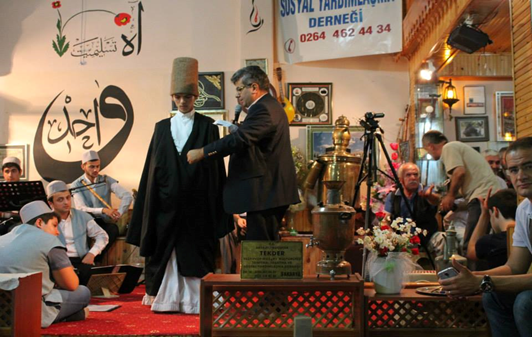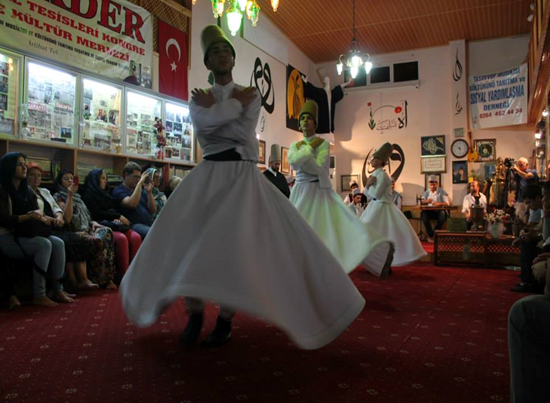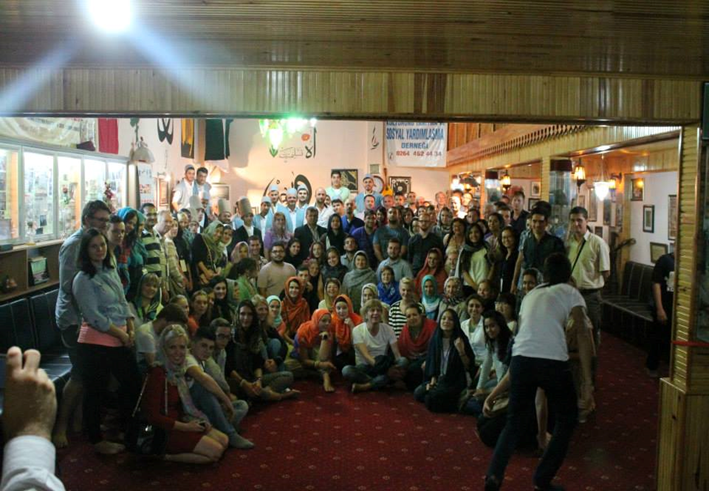The third day’s lecture conducted by Latwia was “ European Citizenship Starts with Culture”
It was stated that globalization has brought great changes in the world. Only 20 years ago there were apparent and obvious differences between European national cultures. People dressed, ate and shopped in instantly recognizable and totally different styles. Nowadays everybody knows McDonalds, dress the same, listen to the same music and access the same internet sites. In culture the differences are deeper and more influential, particularly in people’s attitudes, beliefs and behaviour. Because of the growing ethnic, cultural, racial, linguistic and religious diversity in the world, the students of the 21st century must be prepared to function effectively and gain intercultural competence.. They need new cultural knowledge, attitudes and skills to become multicultural citizens.
The underlying goal of multicultural education incorporates three strands of transformation:
* the transformation of self.
* the transformation of educational establishments.
* the transformation of society.
Culture is a component of those changes. Everybody must know the culture of his nation, school and his own. The capital of Latvia Riga is the European capital of culture 2014 and organizes a lot of cultural activities thus helping people get a new understanding of culture.
In the process of getting to know other cultures people can experience culture shock. It is important to realize its existence and know remedy to fight it.
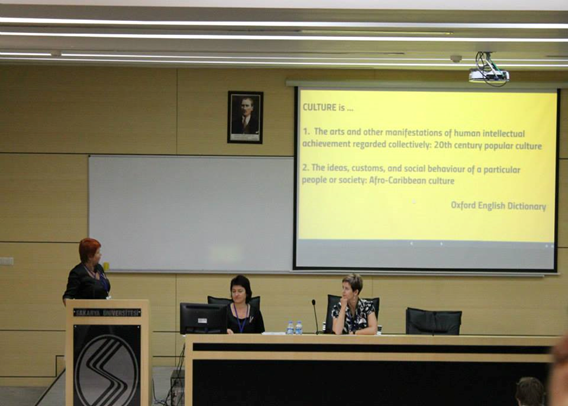
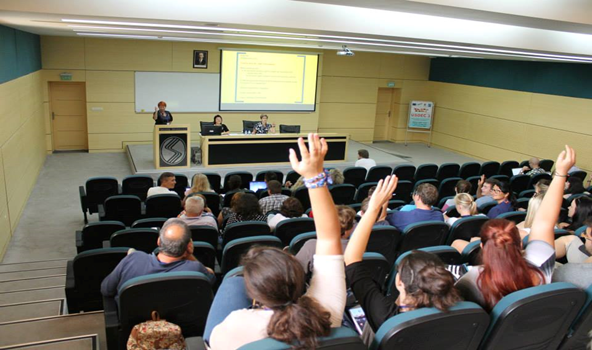
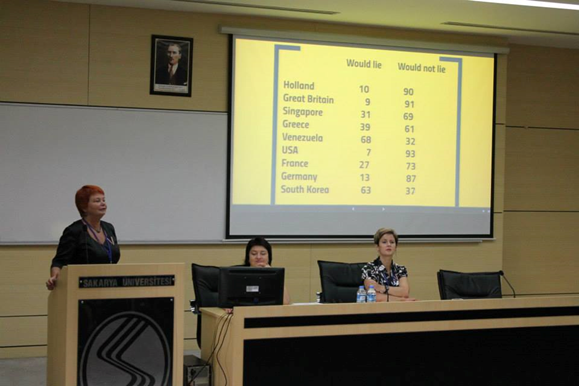
In the second part of the day, Danish group continued with the second part of their workshop session.
Title of part two: “To create a school and education system in a new society, using the Story-line approach”.
The afternoon started with a presentation by the Danish students: “Our Denmark”, a presentation of Denmark and the Danish educational system and society.
After that we got back into the lecture/workshop-project with a short summing up in the groups on the last storyline-question from Tuesday: How should our new community be like?
After this the storyline-approach was again shortly interrupted by a theoretical lecture. This time the aim of the lecture was to focus on the concept of competence in order to discuss which kinds of competences humans/persons should possess as citizens in a democratic society. Especially the concept of “Action Competence” as described by Professor Karsten Schnack (Schnack, 1994) was addressed. “Action Competence” is seen as an important qualification when we talk about what schools should aim for (in Denmark we describe this overall aim with the concept of “Bildung”).
Then back to the Storyline-approach with the storyline-question: What should characterize our children (the future citizens of our new society) after finishing schools at the age of 16?
After this Klafki´s “Core problems” were presented as issues and problems that are general for all humans on Earth. Which could make them important to discuss when talking about WHAT schools should teach in order to raise/educate persons that can function as citizens in a democratic society. This automatically led to the last Storyline-question posed to the students: How should the new school system look?
In this last group work in the storyline approach the students made a poster where they formulated their ideas of a new school and education system, describing the aims of the school, important knowledge and competences, the teaching, the teacher role etc. The work was finally presented by the students in groups in a kind of walk-and-talk formation.
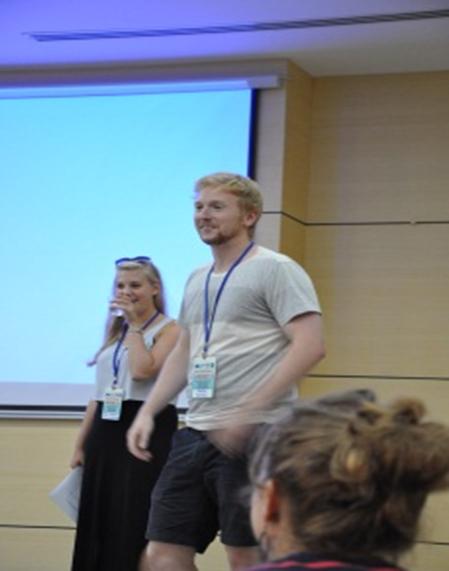
Presentation by the Danish students
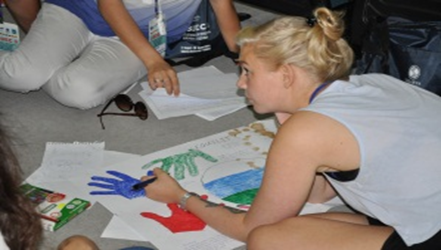
Intense work and discussions in the groups
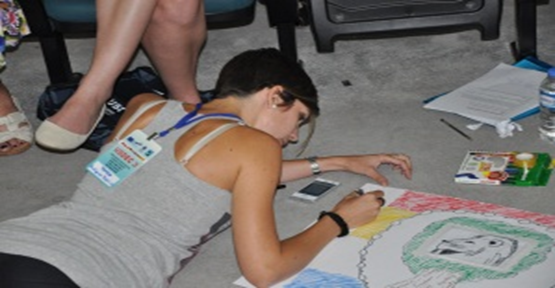
Concentration at stake. Working on presentation-paper
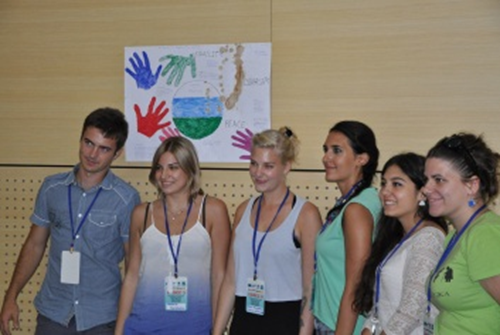
Work done! A proud group in front of their presentation paper
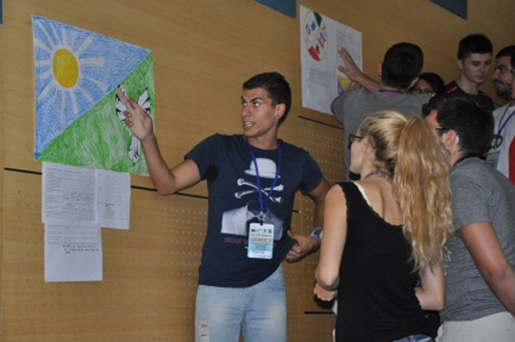
Dedicated presentation of group-work! Our school and education system in a new society
In the evening the participants were taken to a sufi resital in Akyazı, Sakarya. After the welcoming speeches given by the representative of TEKDER the night started with information given by Assoc. Prof. Dr.Osman Titrek. Assoc. Prof. Dr.Osman Titrek introduced semazen‘s clothes and gave some information about Sufism. After the introduction, the sufi show started with a few of sufi songs. After the mini audition, the semazens started their show. All the participants were affected by the performance of the semazens going on with the divine songs. Following the semazens’ performance, the lecturers and the other participants were asked what to feel about both the divine songs performed by the chorus and the semazens and sufis. The night ended with a pumpkin dessert which is a special dessert of Sakarya and which was serviced to all the participants.
Some information about Sufism and Semazens is given as follows:
Sufi whirling (or Sufi spinning) is a form of Sama or physically active meditation which originated among Sufis, and which is still practiced by the Sufist. It is a customary dance performed within the Sema, or worship ceremony, through which semazens aim to reach the source of all perfection, or kemal. This is sought through abandoning one’s nafs, egos or personal desires, by listening to the music, focusing on God, and spinning one’s body in repetitive circles, which has been seen as a symbolic imitation of planets in the Solar System orbiting the sun. As explained by Sufis
In the symbolism of the Sema ritual, the semazen’s camel’s hair hat (sikke) represents the tombstone of the ego; his wide, white skirt (tennure) represents the ego’s shroud. By removing his black cloak (hırka), he is spiritually reborn to the truth. At the beginning of the Sema, by holding his arms crosswise, the semazen appears to represent the number one, thus testifying to God’s unity. While whirling, his arms are open: his right arm is directed to the sky, ready to receive God’s beneficence; his left hand, upon which his eyes are fastened, is turned toward the earth. The semazen conveys God’s spiritual gift to those who are witnessing the Sema. Revolving from right to left around the heart, the semazen embraces all humanity with love. The human being has been created with love in order to love. Mevlâna Jalâluddîn Rumi says, “All loves are a bridge to Divine love. Yet, those who have not had a taste of it do not know!”
